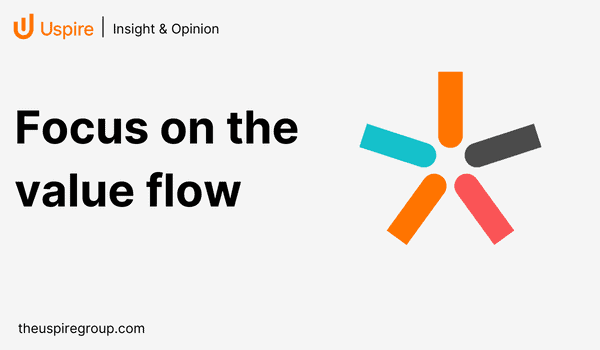Everyone recalls the story of that poor old lady who swallowed a fly, right? How unfortunate. She inadvertently swallowed a little fly but then felt the need to swallow the next thing up the food chain to overcome her original misfortune. So she needed the spider to catch the fly, and then the bird to catch the spider and the cat to catch the bird. And on it went.
And so her strategy reminds me of the Marcus Child “People Strategy on a Page”, or maybe it’s just his lyrical way of outlining the process of getting to the end goal. That end goal coming from a sequence of events building together to reach a conclusion.
His People Strategy on a Page is a remarkable process for getting to the end goal, the company’s Desired State. The Desired State is a statement of real and deeply thought-out and considered intent. It is where the business wants to be in 3 years. Not too soon as the processes and desire can’t be built too quickly, and not any longer as it needs to stimulate action, and anything over 3 years may attract a mañana attitude. The Desired State can be derived by a small group of executives, but is more likely to be accepted as a driving force of the business if the whole business is involved in its creation.
Design by committee! Yuk. Mostly likely your reaction to that. But Marcus tells powerful stories, and when he says he helped 200 people develop a single Desired State, then, well, I believe him.
So, the Desired State is the end goal, like the old lady’s need to kill that darn fly. So, to get the Desired State the business needs to go through a sequence of events to foster the right climate for change. Starting with understanding the customer behaviour necessary for them to reach their Desired State.
How do they need their customers to behave in order to create the right conditions for change and growth? M&S needed really simple customer behaviour to help their journey:
- Buy more
- Come back
- Tell others
Exceptionally simple, but very hard to achieve. So, to create the environment for this to happen, companies must understand the key drivers that will make the customers do what they want. What are the game changers? How can they release the handbrakes on these drivers and capitalise on what customers really want?
But do companies really know? In the case of the high street coffee chains it appears that one did, and one maybe didn’t. Marcus refers to this when explaining how it may seem obvious what drives customer behaviour, but some companies can get it very wrong. We may be forgiven for assuming that a key driver for a visitor to a coffee chain is coffee . But one chain did assume this and the other stole a march on their competitor by releasing that coffee was only a secondary driver to having a place to meet. So coffee became a smaller part of the equation, and sat secondary to space, design, plug-points, comfort etc, things that help satisfy the customers need for a comfortable and relaxing meeting venue.
So, once the key drivers are determined it is then the people behaviours in the business that create the conditions to exploit the key drivers. Do the people in the business display the right behaviours to create these conditions? Are they employed with certain key drivers in mind when they should be focusing on something different? Marcus tells a fascinating story about the people behaviours in a large gym chain not exactly matching the key drivers of the majority customer base. Very interesting.
After the people behaviours are identified, it is necessary to create the conditions that will influence the behaviours. If the right conditions can be created that stimulate the people then they become engaged and can deliver the key drivers that attract the customers.
And finally, the leader actions are those that create the conditions for the correct people behaviour.
So, the leader actions create the conditions to make the people behave in the ways that causes the drivers that make the customers do the things that enable the goal to come true.
Comfortingly lyrical, but watch here to hear Marcus express it even better.

